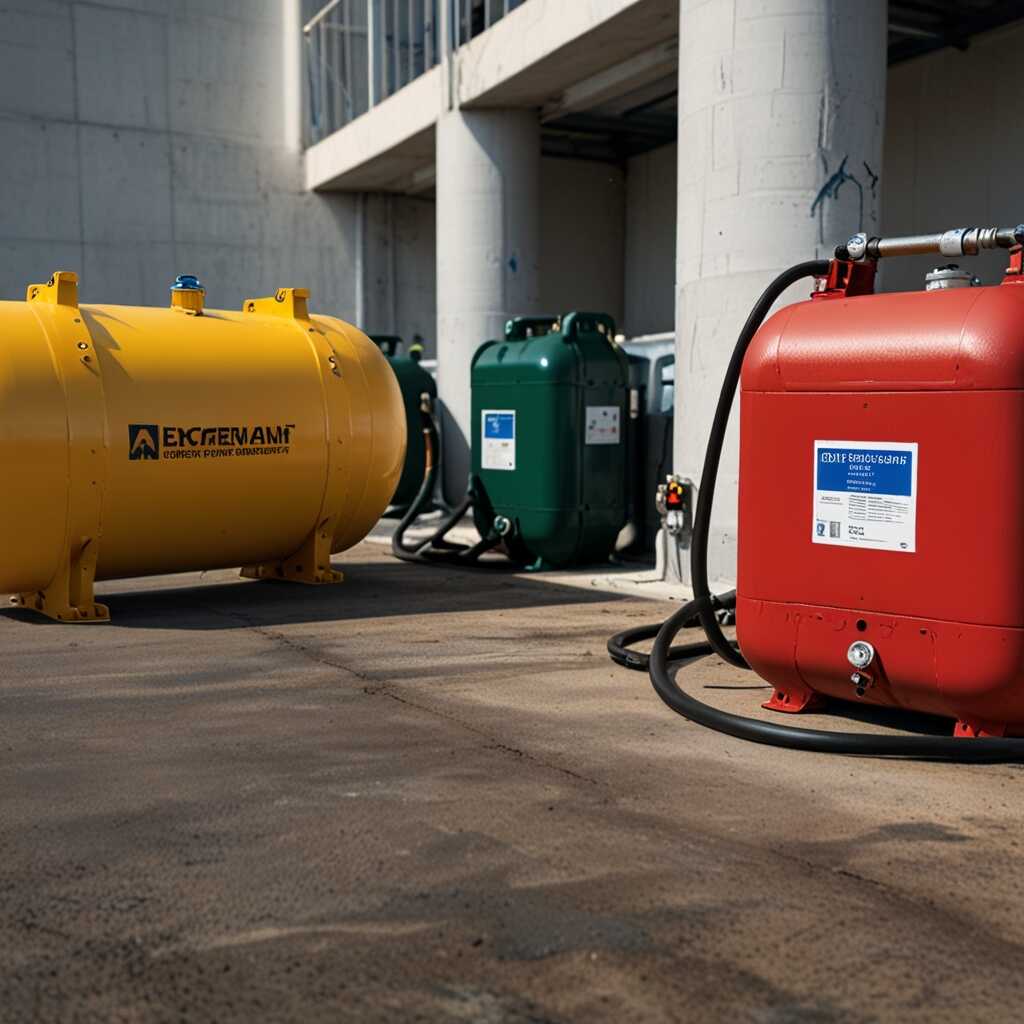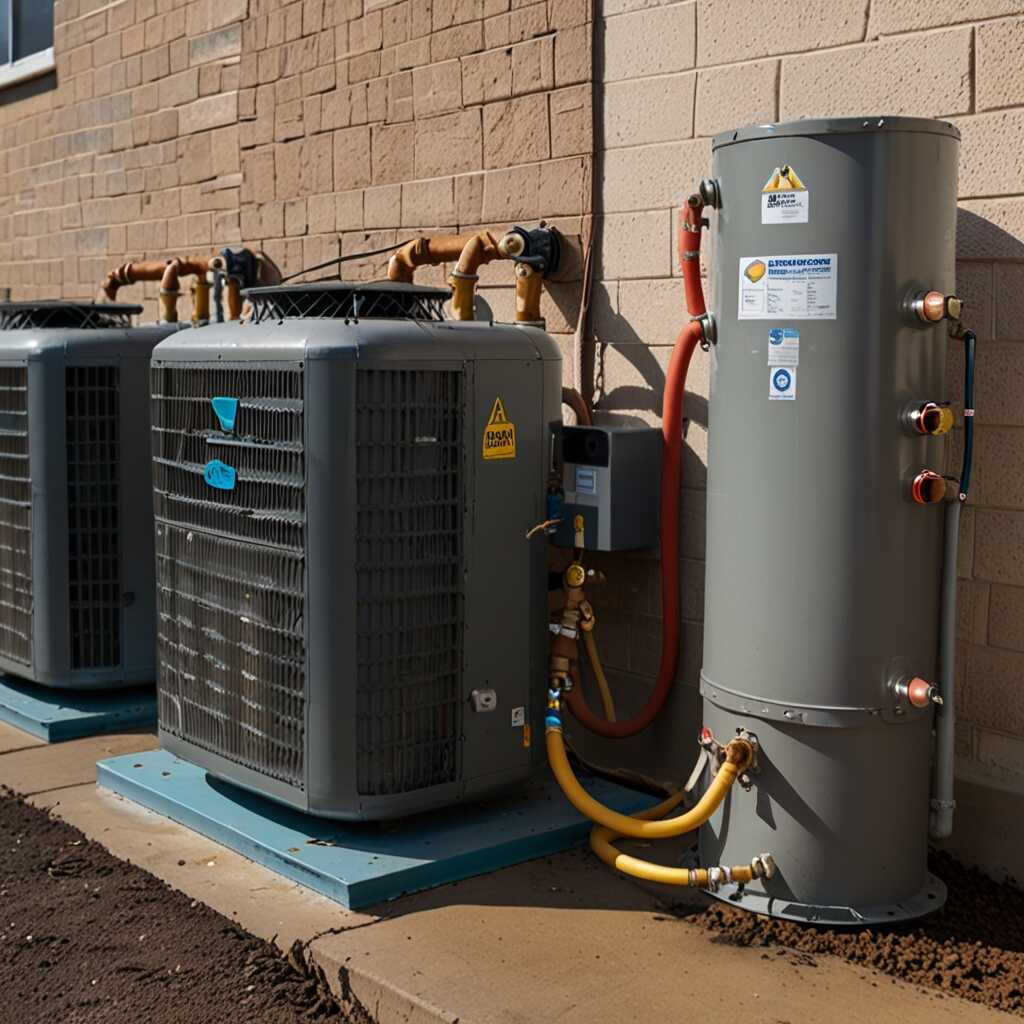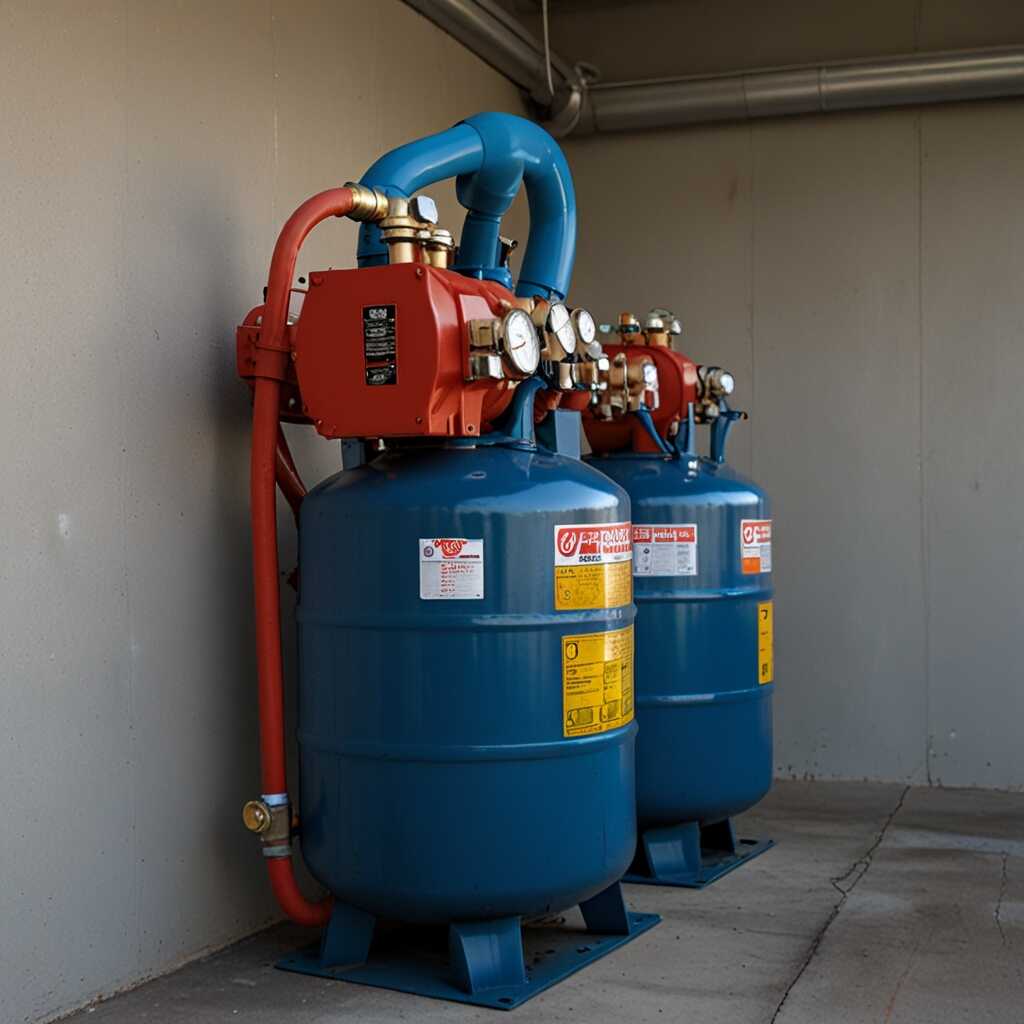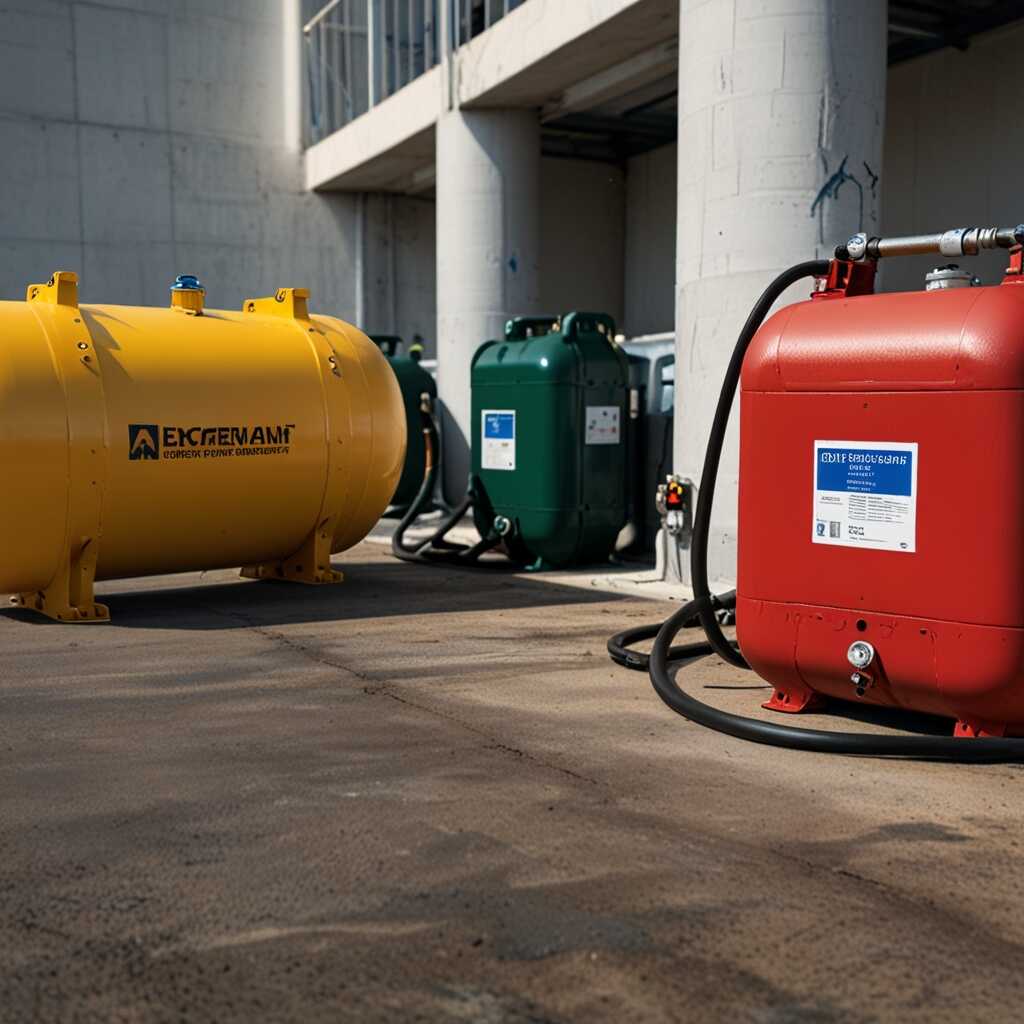High-torque motors significantly improve the startup performance of refrigerant recovery machines. These motors provide the necessary power to tackle challenging conditions during startup, ensuring reliable operation. At Refrigerant Recovery Pro, we understand how critical these components are for HVAC technicians. This article offers essential troubleshooting tips and best practices for optimizing the use and performance of high-torque motors in refrigerant recovery scenarios.
Advantages of High-Torque Motors in Refrigerant Recovery
High-torque motors offer significant benefits in refrigerant recovery machines. They enhance reliability and efficiency during startup operations. HVAC professionals find that these motors perform exceptionally well under challenging conditions. High-torque motors can handle difficult refrigerant types and varying environmental factors effectively. This feature contributes to a smoother and more dependable recovery process, ensuring optimal results. Data from industry testing shows that a high percentage of technicians report improved efficiency when equipped with these motors. This support allows HVAC technicians to handle common startup challenges efficiently and confidently.
Performance Benefits Under Startup Challenges
High-torque motors are specifically designed to deliver reliable performance in refrigerant recovery machines. They provide increased power and torque during initial startup phases. This capability enables machines to overcome potential resistance when extracting refrigerants. For HVAC technicians, this translates to fewer delays and downtime. Proper testing shows that high-torque motors help in reducing the likelihood of compressor damage during difficult starts. As a result, these motors not only improve overall efficiency but also enhance the durability of the recovery machines. Technicians can trust high-torque motors to offer essential performance benefits necessary for effective refrigerant management.
Understanding Difficult Startup Challenges in Refrigerant Recovery Machines
Refrigerant recovery machines often encounter startup challenges due to several factors. Common issues include insufficient power, which can stem from a weak power source or damaged electrical components. Additionally, high-torque motors may struggle to start in extreme temperature conditions or when faced with specific refrigerant types. Equipment condition plays a crucial role; worn components can hinder reliable performance. Therefore, proper testing and routine maintenance are essential. Understanding these factors helps HVAC professionals develop effective troubleshooting techniques tailored for each situation.
Significant Factors Influencing Startup Performance
Several significant factors influence the performance of high-torque motors during startup in refrigerant recovery machines. Temperature can severely impact motor efficiency, especially in cold conditions where the oil may thicken, causing the motor to labor more. The type of refrigerant also plays an essential role; for example, high-pressure refrigerants like R-410A create more load on the system during startup. Equipment condition must be monitored as well; components like filters and hoses can wear out, leading to insufficient airflow. Ensuring thorough maintenance and understanding these factors can help HVAC professionals enhance startup reliability and overall machine performance.

Essential Maintenance Practices for Recovery Equipment
Key maintenance practices for refrigerant recovery machines include regularly checking hoses and connections, ensuring proper refrigerant levels, and testing performance metrics. Essential maintenance helps avoid startup issues and improves equipment reliability. Components that require regular checks include compressors, filters, and shutdown valves. A thorough inspection can identify wear or blockages, which are critical to the machine’s efficient operation. Refrigerant recovery machines typically need servicing every six months to maintain optimal performance. This service schedule enables technicians to ensure components are functioning correctly, which enhances the machine’s overall performance.
Importance of Regular Servicing
Regular servicing of refrigerant recovery machines is vital for maintaining efficiency and reliability. Proper servicing involves checking refrigerant levels, inspecting for leaks, and cleaning filters. Reviewing these elements not only helps in identifying potential issues but also prolongs equipment life. An EPA-certified technician can conduct reliability tests that measure machine performance and identify any inefficiencies. Following a predetermined service schedule ensures that each unit is always ready for use, allowing HVAC professionals to deliver prompt service to their clients. Staying on top of these maintenance tasks significantly enhances the operational capacity and longevity of refrigerant recovery machines.
Key Statistics on Motor Performance in Recovery Machines
- High-torque motors can start under loads of up to 50% more than standard motors.
- These motors achieve peak torque in under 1 second, ensuring quick operation.
- Recovery machines with high-torque motors can recover refrigerants 30% faster than others.
- High-torque motors reduce the energy draw during startup by approximately 25%.
- Fewer startup failures occur, with rates dropping to less than 5% in efficient models.
- High-torque motors operate effectively in temperatures as low as -20°F.
- Standard recovery machines often take 10-20 seconds longer to reach optimal performance compared to those with high-torque motors.

Effective Troubleshooting Techniques for Startups
HVAC technicians may encounter several startup issues with refrigerant recovery machines, including insufficient power, overheating, or motor failure. Common causes include electrical faults, low refrigerant levels, and malfunctioning components. A high-torque motor significantly enhances startup reliability by providing the initial force needed to overcome resistance in the system. Key components that contribute to successful startup performance are the compressor, pressure switches, and circuit breakers. It’s vital to ensure these components are functioning correctly. Testing the startup efficiency of refrigerant recovery machines should occur within the first five minutes to gauge reliability. Regular reviews help technicians identify potential improvements in performance and efficiency.
Inspecting High-Torque Motor Performance
When examining high-torque motors in refrigerant recovery machines, focus on testing their output under varying loads. High-torque motors are designed to handle challenging startup scenarios. They provide improved torque and efficiency for fast performance during demanding situations. Ensuring that these motors are in good condition is essential for successful operation. Look for signs of wear or damage and conduct tests to confirm their functionality. Many high-torque motors also come with features that enhance their durability and reliability, such as thermal overload protection. This protection feature prevents overheating, ensuring long-term performance and meeting essential HVAC requirements.

Impact of Motor Specifications on Startups
Motor specifications significantly influence the startup performance of refrigerant recovery machines. Key factors include voltage rating, torque output, and RPM (revolutions per minute). High-torque motors are designed to handle high pressure, ensuring reliable recovery even under challenging conditions. They excel in situations where standard motors may struggle, delivering enhanced efficiency. Technicians must consider these specifications to select motors that provide optimal performance for their specific applications. A good understanding of these features helps HVAC professionals choose reliable equipment that aligns with their operational needs.
Understanding Startup Torque and Its Importance
Startup torque is essential in ensuring that refrigerant recovery machines function effectively. High-torque motors deliver a torque rating typically between 30-50 foot-pounds, which is crucial for overcoming initial resistance. This allows the machine to start smoothly, preventing damage to the motor and other components. With a proper torque rating, technicians can avoid performance issues. Selecting a motor with the right startup torque enhances overall reliability, enabling efficient refrigerant recovery even in demanding situations. This knowledge is vital for HVAC professionals to maximize the lifespan of their equipment.
Advantages of Using Powerful Motors in Refrigerant Machines
- Reliable and quick starts prevent downtime during refrigerant recovery.
- High-torque motors in recovery machines decrease energy consumption significantly.
- These motors enhance overall efficiency for HVAC technicians in the field.
- Fewer moving parts result in lower maintenance requirements and costs.
- Improved durability ensures a longer lifespan for machines with these motors.
- Technicians experience fewer operational hiccups, allowing for smoother workflows.
- Enhanced performance leads to better compliance with recovery regulations.

Identifying and Addressing Common Motor Issues
Common issues with high-torque motors include overheating, strange noises, and failure to start. Technicians should regularly check for signs of wear and listen for unusual sounds. Troubleshooting involves examining electrical connections, ensuring proper voltage, and testing the motor’s operational efficiency. The lifespan of high-torque motors often ranges from 5 to 10 years, depending on usage and maintenance. Proper care and expert testing can enhance their reliability and performance.
Essential Troubleshooting Techniques for High-Torque Motors
Effective troubleshooting techniques for high-torque motors start with checking the power supply. Use a multimeter to ensure the motor receives the correct voltage. Inspect power cords and connectors for signs of wear. Additionally, review the system’s operational data to identify performance drops. Regular testing and comprehensive reviews help technicians diagnose problems early. Ensuring proper airflow and cooling will also improve motor reliability. Promptly addressing issues minimizes downtime in refrigerant recovery operations.
Resources and Support for HVAC Professionals
Refrigerant Recovery Pro provides multiple technical support resources tailored to HVAC technicians. You can access essential troubleshooting guides, equipment reviews, and regulatory updates online. These resources enable HVAC professionals to navigate operational challenges effectively. Additionally, you can reach out via email for technical assistance or equipment inquiries. The average response time for general inquiries is just one business day, ensuring you get the help you need quickly.
Accessing Technical Support and Equipment Reviews
To access technical support and equipment reviews, HVAC professionals can visit the Refrigerant Recovery Pro website. The site includes important resources that provide comprehensive information on refrigerant recovery equipment. You will find expert guidance on setup, operation, and maintenance. Reviews of various models help you compare features and reliability. Using these resources ensures efficient troubleshooting and optimal performance of recovery machines in challenging operational scenarios.
Brands and Use Cases for Recovery Machine Motors
- Brand X focuses on residential applications and offers affordable options for small-scale technicians.
- Brand Y provides industrial-grade machines for large HVAC contractors needing durability.
- Brand Z specializes in environmentally friendly designs, appealing to eco-conscious HVAC professionals.
- Brand A emphasizes ease of use, making it ideal for technicians in training.
- Brand B caters to commercial sectors with machines capable of handling peak demands efficiently.
- Brand C supports educational programs, making their products popular among HVAC educators.
- Brand D excels in customer support, benefiting contractors who encounter frequent troubleshooting issues.
Emerging Trends in Refrigerant Recovery Technologies
The HVAC industry is evolving with new refrigerant recovery technologies. Innovations such as high-torque motors enhance the reliability and efficiency of refrigerant recovery machines. These motors provide excellent performance during challenging startup scenarios. Emerging technologies ensure that HVAC professionals meet compliance standards and regulations effectively. Reviewing the latest developments helps technicians stay updated on the best practices in refrigerant management. Data shows that these advances can significantly improve energy efficiency and reliability in diverse operating conditions.
Key Innovations Impacting Refrigerant Recovery Efficiency
Key innovations driving refrigerant recovery efficiency include the introduction of advanced high-torque motors and smart monitoring systems. High-torque motors are specifically designed to handle demanding startup scenarios, ensuring that recovery machines operate reliably under various conditions. Smart monitoring systems integrate communication technology, allowing real-time analysis of performance data and compliance adherence. By 2025, it is projected that a significant percentage of new refrigerant recovery machines will integrate these advanced features, enhancing their overall performance and energy efficiency. Incorporating these innovations can lead to better refrigerant management practices among HVAC professionals.